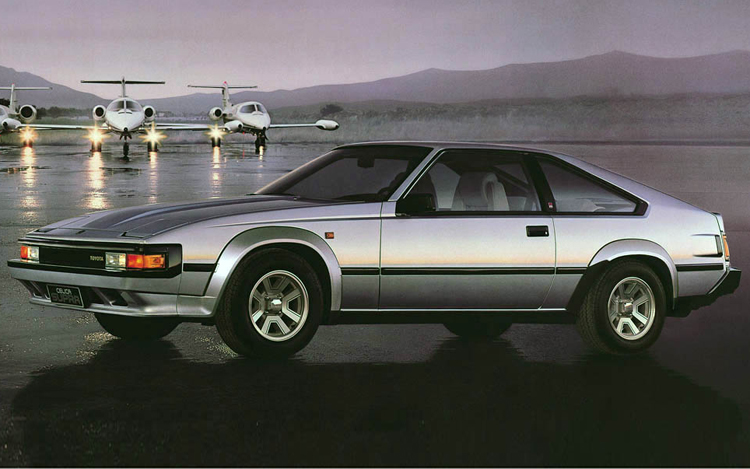“… a price that belies its good looks.
1980 was the first year that Toyota sold the Corolla Tercel in the United States. Despite its name, the front-wheel-drive Tercel was not related in any meaningful way to the rear-wheel-drive Corolla, but Toyota evidently figured that adding the Corolla name would make buyers more confident in their purchasing decision. The Tercel was available as a 2-Door Sedan and a 3-Door Liftback (a four-door sedan would arrive one year later).
The Corolla Tercel Liftback was a small and light car, with a 160 inch length (about 20 inches shorter than a 2022 Corolla) and a curb weight of 2,030 pounds. The Liftback’s standard powertrain combined a 60 bhp 1.5 liter/99 ci inline four paired to a five-speed manual (a three-speed automatic was optional). Unusually for a front-wheel-drive car, the Tercel’s engine was longitudinally placed, which Toyota claimed resulted in easier serviceability.
Road & Track clocked a 0-60 time of 14.8 seconds in a loaded Tercel Liftback SR-5. As might be expected with a 99 cubic inch engine and a five-speed, fuel economy was impressive—33 city/43 highway by the day’s standards. With an 11.9-gallon fuel tank, a Tercel driver could expect a range of 330 to 365 miles with a 10% fuel reserve.
The Liftback had more standard equipment than the 2-Door Sedan, which was the loss leader. At $4,848, the Corolla Tercel Liftback Deluxe included body side moldings, front-wheel-drive, rack-and-pinion steering, power-assisted front disc/rear drum brakes, and 155/80R12 tires on 12-inch wheels. Inside, reclining front bucket seats and a split-back fold-down rear seat were included.
The $600 SR-5 package added black accents, side striping, and 165/70SR13 radial tires (a size still available thanks to Vredestein) on 13-inch wheels. Inside, SR-5 features included a cloth interior, full interior carpeting, a tachometer, and an AM/FM/MPX stereo radio.
Options were relatively few, but did include aluminum alloy wheels ($215), a rear window washer/wiper ($75), and air conditioning ($520).
I haven’t seen a first-generation Tercel in decades. Make mine Light Blue Metallic, please.
Other Toyotas I have written about include the 1981 Celica Sport Coupe, the 1982 Celica Supra hatchback coupe, the 1983 Camry sedan, and the 1985 MR2 coupe. This list hints that I should write about an actual Corolla soon.




